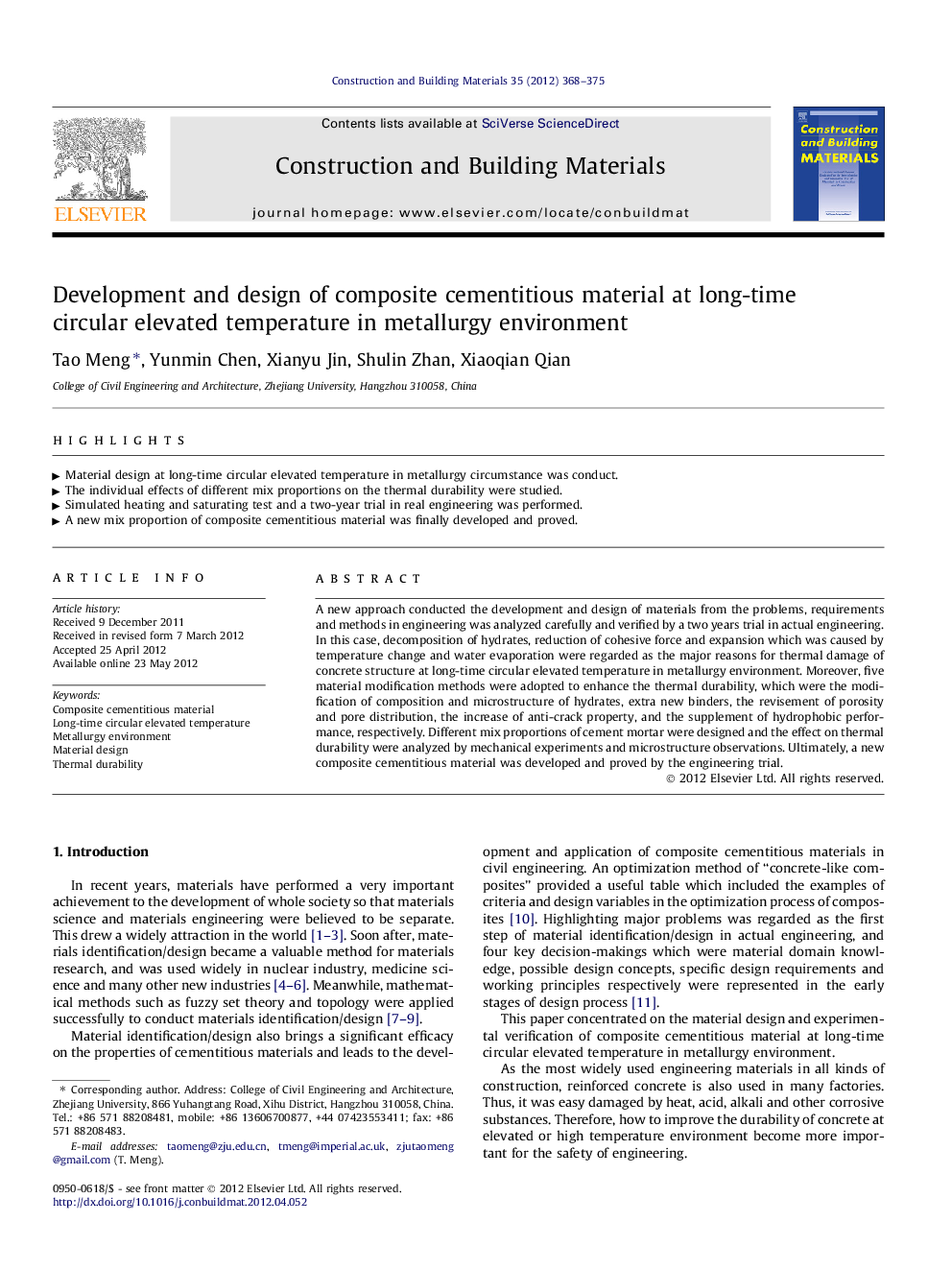| Article ID | Journal | Published Year | Pages | File Type |
|---|---|---|---|---|
| 258859 | Construction and Building Materials | 2012 | 8 Pages |
A new approach conducted the development and design of materials from the problems, requirements and methods in engineering was analyzed carefully and verified by a two years trial in actual engineering. In this case, decomposition of hydrates, reduction of cohesive force and expansion which was caused by temperature change and water evaporation were regarded as the major reasons for thermal damage of concrete structure at long-time circular elevated temperature in metallurgy environment. Moreover, five material modification methods were adopted to enhance the thermal durability, which were the modification of composition and microstructure of hydrates, extra new binders, the revisement of porosity and pore distribution, the increase of anti-crack property, and the supplement of hydrophobic performance, respectively. Different mix proportions of cement mortar were designed and the effect on thermal durability were analyzed by mechanical experiments and microstructure observations. Ultimately, a new composite cementitious material was developed and proved by the engineering trial.
► Material design at long-time circular elevated temperature in metallurgy circumstance was conduct. ► The individual effects of different mix proportions on the thermal durability were studied. ► Simulated heating and saturating test and a two-year trial in real engineering was performed. ► A new mix proportion of composite cementitious material was finally developed and proved.
